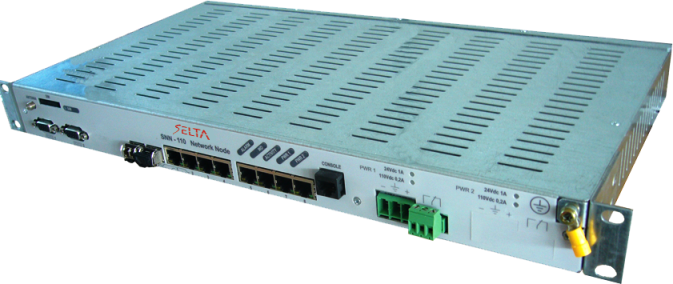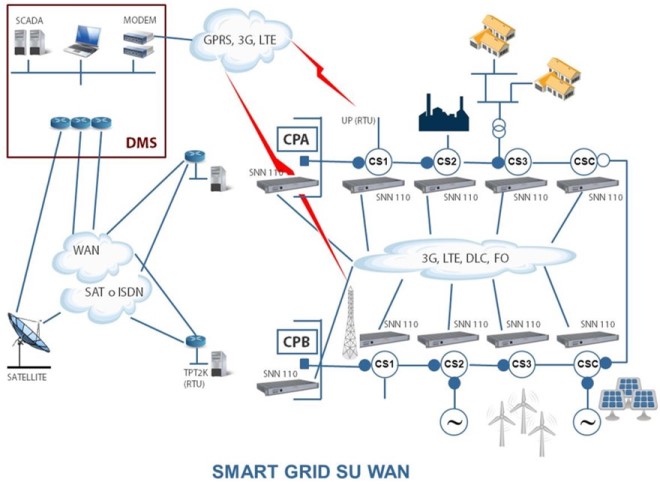Multimedia convergence network node.
SNN 110 transmission equipment is a switch/router of level 2 and 3, the ideal solution for private packet networks, networks over optical fibre or copper, local (LAN) and geographically extended (WAN). SNN 110 is the ideal system both for the HV/MV power substations automation and the distributed generation management in Smart Grids.
SNN 110 equipment includes 10/100 BaseT Ethernet interfaces to connect users based on standard Ethernet packet communication and 100 BaseFX fiber-optic interfaces with SFP (monomode and multimode) or MTRJ (multimode) slots. Teh device offers advanced level 2 and level 3 networking functionalities. For level 2 networks it supports the Rapid Spanning Tree Protocol (RSTP, IEEE 802.1d-2004), besides the traditional STP, to solve conflicts between multiple paths within meshed architectures having fault tolerance needs. This capability, combined with the possibility to set VLAN (IEEE 802.1q) and to manage priorities (IEEE 802.1p), makes SNN 110 the ideal solution for the Utilities, guaranteeing high availability and prompt response time.
For networks of Level 3 SNN 110 provides static and dynamic algorithms and routing protocols (RIP, OSPF) for meshed architectures, tunneling mechanisms through OPENVPN to implement VPNs over the public grid (internet), and through GRE and L2TPv3 protocols to make IP and level 2 virtual tunnels. The introduction of QoS mechanisms with different classes of traffic and with the definition of guaranteed bands allows the management optimization, guaranteeing high remote control and monitoring performances also with applications where different services (voice, video and data) are converging on the network.



